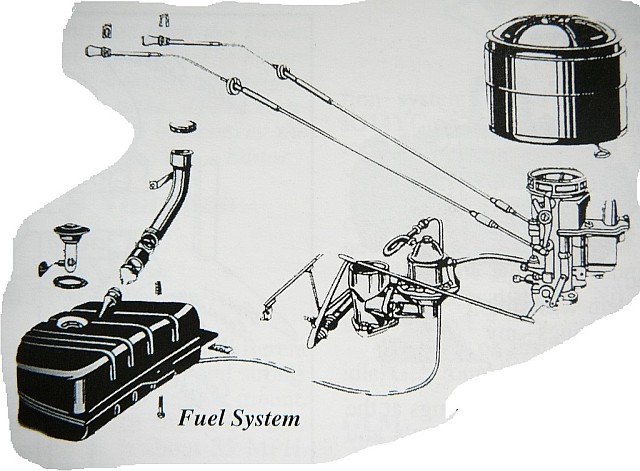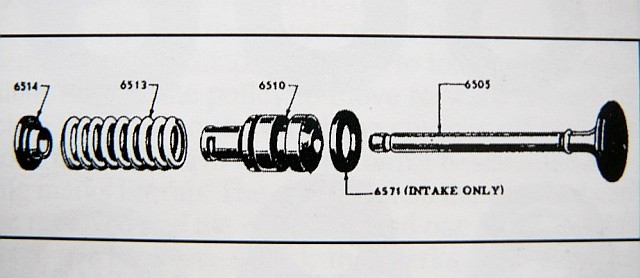 There is not much chance that we can buy leaded fuel to put in our old cars today. Yet when they were in their heyday, leaded fuel was the norm.
There is not much chance that we can buy leaded fuel to put in our old cars today. Yet when they were in their heyday, leaded fuel was the norm.
What do we need to do differently when rebuilding our engines now to use today's unleaded, and sometimes oxygenated, fuels?
The fuel system includes the gas tank, fuel gauge sender, fuel lines, fuel pump and carburetor. The lack of lead in fuel causes no problems with any of these, as far as I know.
Some of the oxygenates in auto fuel today, such as methyl and ethyl alcohol can be problems. Some of the non-metallic parts in the fuel pump (the diaphragm and valves) may be chemically attacked, causing softening. Pieces may come loose and be carried into the carburetor, plugging jets and passages. The diaphragm may leak fuel.
These two alcohols also pull water out of the air. The water in the fuel may then cause rust and corrosion of metal fuel system parts. This could damage them enough so that they don't perform their intended duties. Corrosion products, like rust and scale, can restrict fuel flow or plug passages in the carburetor.
It is better to avoid fuel with alcohol in it unless you know that your fuel system components are compatible with it. The viton family of elastomers work fine with alcohol.
Other oxygenates, such as MTBE (methyl tertiary butyl ether) do not seem to cause any problems. They are poisonous, as is the base fuel, only more so. You don't still siphon gas by mouth, I hope.
Inside the engine, the (tetraethyl) lead had some cushioning and lubricating properties, as well as the main purpose of raising the anti-knock index. The cushioning is most important between the valve and its seat. It has been found that without leaded fuel, the exhaust seats will recede -- they get pounded away -- into the block or the lead unless they are hardened.
Hardening can be done by machining the old exhaust seat area away and pressing in a hardened insert. The hardened insert must then be machined at the proper angle and size to provide a seating area for the valve. It has not proven necessary to have hard seats for the intake valves.
Most of the valve themselves are compatible with the unleaded fuel and with the hard seats. Some early, magnetic intake valves may have a problem, although I have not seen that.
The lubricity of the leaded fuel would be missed most in the contact area between the valve stem and the guide. In our flatheads, I have not seen that it is a problem. There is not nearly as much stress in the valve stem and valve guide area in our "underhead cam" engines as in overhead valve engines with rocker arms.

In summary, most of our flatheads already have hard seats or hardened seat areas. In 1952 and 1953, many did not. In any case -- where is not hardened metal for the exhaust valve seating area, install hard seats.
